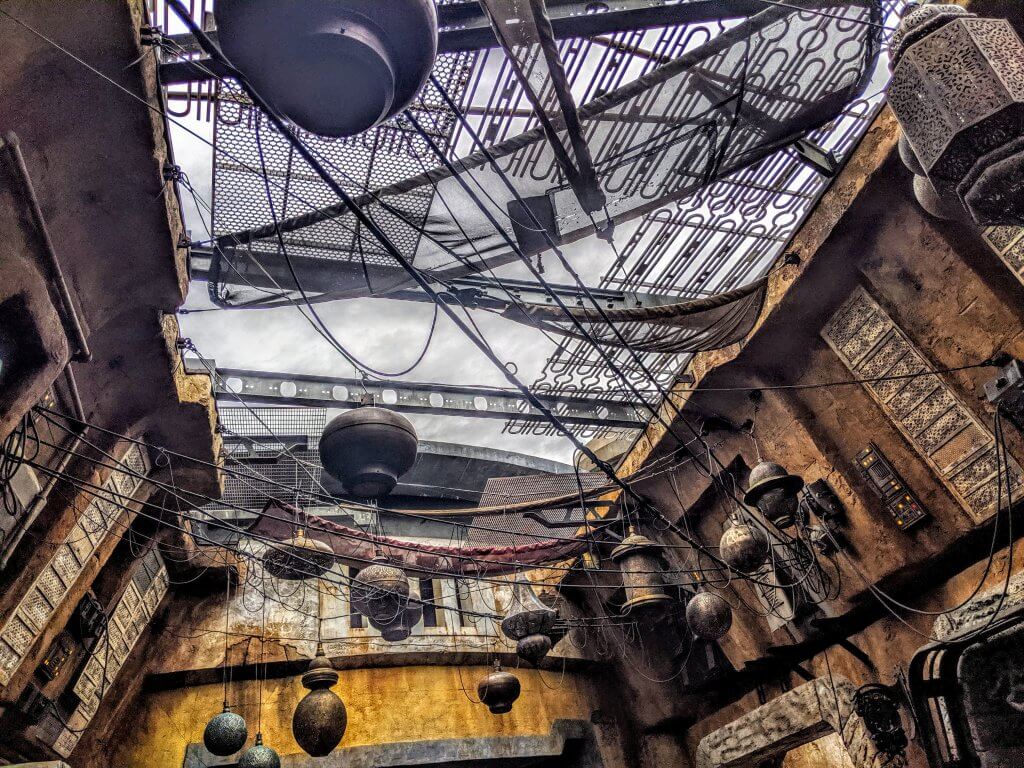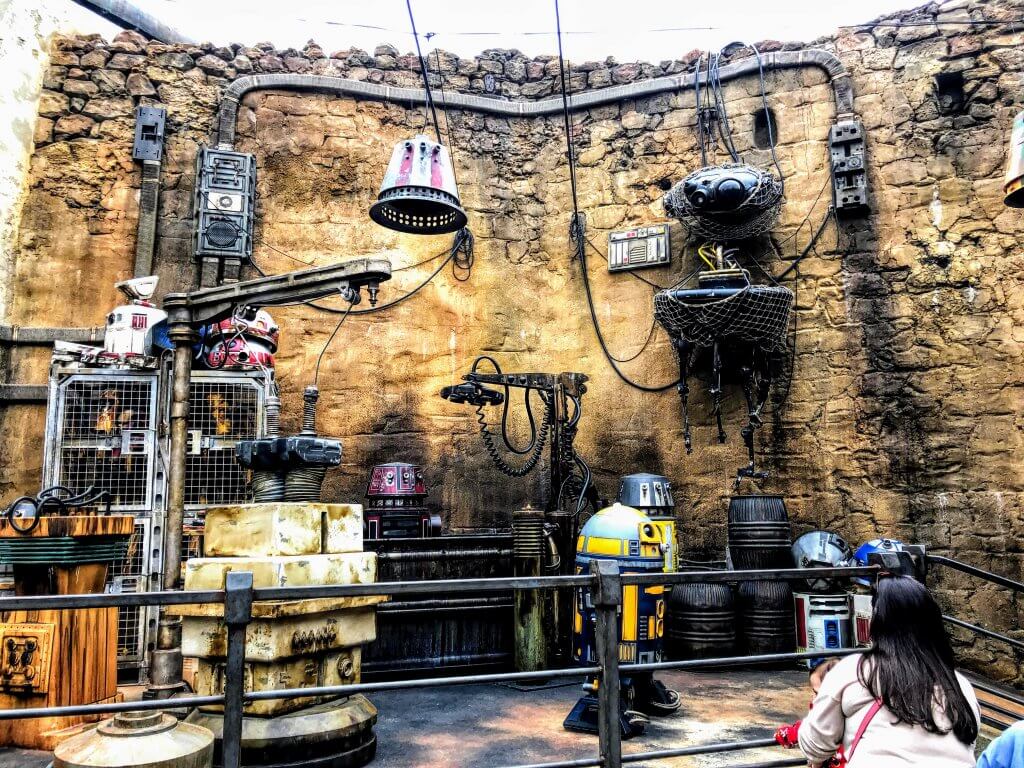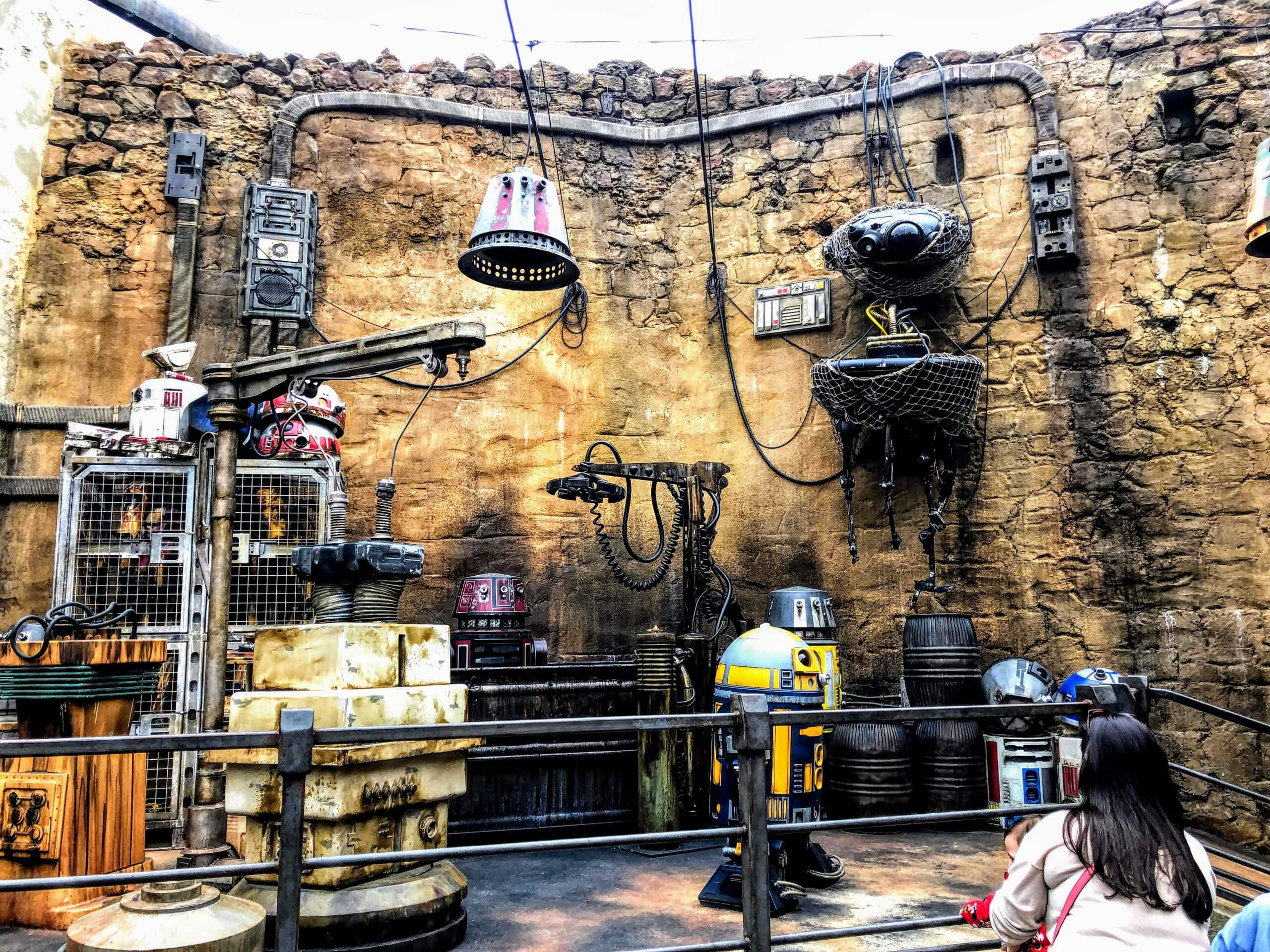Last week the Coronavirus forced Disney to announce that its American parks are now closed indefinitely, resulting in the longest interruptions of any kind since they opened in 1955 (Disneyland) and 1965 (Walt Disney World). Disney has been on my mind because I made my first ever visit to Walt Disney World in Orlando on January 25th of this year, just as the first COVID 19 cases were being identified in the US.
A Disney skeptic, I had agreed to visit Disney World with my extended family because of my sister’s love of all thing Star Wars. She wanted us to be among the first to experience the Rise of the Resistance, an extraordinary new ride that was built into Galaxy’s Edge, an immersive Star Wars world that has been open for less than a year. The Rise of the Resistance lived up to the hype, giving us a theatrical and participatory experience that positioned us as rebel fighters on a mission against the Nazi inspired First Order.
I returned from Disney World not quite a convert, but I was bowled over by the capital, the artistry, and the immense amount of labor and creativity that went into the making of Galaxy’s Edge. I also learned some lessons at Galaxy’s Edge that I think have some bearing on the Coronavirus pandemic we are experiencing.

Lesson #1: Fantasy requires reality. In this case, strangely, it’s a global working-class reality. Galaxy’s Edge is set in the fictional town of Black Spire Outpost on the planet Batuu, a once-upon-a-time trading hot spot that has been reduced to a post-industrial town for smugglers, grifters, and rebels. It’s the rust belt of the future. Big metal doors lead to nowhere and bits of abandoned industrial architecture are rendered in exquisite detail. There are piles of old metal suitcases, walls cracked to reveal a cache of ancient pottery, wire lockers containing old Rebel fighter uniforms, and an abandoned filling and repair station for defunct planetary jalopies.
The architecture of Black Spire Outpost is also deeply influenced by Middle Eastern cities, including Istanbul, Marrakesh, and Jerusalem. Erik Tiemens, a concept designer for Lucas Films, visited these cities “personally shooting nearly 3,000 reference photos to help inspire those earliest iterations.” Using these photos, the Disney Imagineers reproduced the effect of Middle Eastern marketplaces and densely packed housing. Electric wires and punk/grunge industrial grids are layered with lacy metallic Morrocan lamps, exposed brick, dwelling balconies, holes from laser gun battles, and tracks worn by grist mills.
Black Spire Outpost is a place for roustabouts, migrant workers, and political renegades. It’s an ironic setting, because Disney World is very expensive, now more than ever, and all the Disney goers I see around me are privileged. But Black Spire Outpost is a gritty, working-class town. And it’s beautiful. And it’s inspired by ancient, storied, cities that exist in the real world. And it’s fake. And it’s real.

Lesson #2: It takes a great deal of labor and capital to make Disney Magic. Walt Disney World alone employs more than 70,000 workers, though the company insists on calling them “cast members.” In 2018, they negotiated a series of pay increases that will establish a minimum wage of $15.00 per hour for everyone in the park. That’s a good start, but workers remain a long way from sharing in Disney’s huge profits. In 2019 the corporation netted more than 11 billion dollars.
Galaxy’s Edge took six years to complete and the labor of scores of designers and artists, musicians (John Williams composed new music for it), game designers and architects. It took 50 contractors and 5,500 construction workers to build the version in Orlando. Workers were sworn to secrecy, and there were “no leaks,” according to Disney, because the workers felt a ownership over the project. Like the great cathedrals and previous wonders of the world, Galaxy’s Edge is a massive works project.
It is estimated that the Taj Mahal would cost 100 million in today’s dollars, the Colosseum 435 million, and the Giza Pyramids 1.2 billion dollars. At a cost of 1 billion dollars per Disney park, Galaxy’s Edge is one of the most expensive, prodigious, three-dimensional, sense-transforming, creative and labor-intensive human achievements of the 21st century—and maybe in the history of the world. Galaxy’s Edge may well be our culture’s Giza Pyramids.
Lesson #3: We can do anything we want. Last week’s stimulus bill authorizes 2.2 trillion in spending. What will be the legacy of this spending? As long as we’re printing money, can’t we print money for Medicare for All? For the Green New Deal? For free college for everyone? For more Coronavirus tests? For 100,000 ventilators? For 500 billion hospital masks? What will be our nation’s Galaxy’s Edge?
As America has awakened to the reality of the pandemic some have argued that our only focus should be on fighting the disease, flattening the curve, and putting politics aside. With last week’s stimulus bill the GOP has been transferring wealth upwards to billionaires and large corporations, despite the bill’s bipartisan nature and some provisions that send stimulus checks to many Americans, boost unemployment funds and give money for hospital support.
In contrast to these approaches, Naomi Klein, Bernie Sanders, and others are arguing for a different approach: use the crisis to secure basic human rights that will make withstanding the next pandemic, and the crisis of climate change, possible. My trip to Galaxy’s Edge taught me that we can do anything we want if we put our trillions to it.
Surely if we can build the modern day pyramids we can fight the Coronavirus. Now all we have to do is join the resistance!
Kathy M. Newman, Carnegie Mellon University







